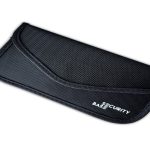Sweden's initial autonomous bus operations, such as those involving EasyMile EZ10 shuttles in Stockholm (e.g., Barkarby test bed), prioritize safety through multi-layered redundancy and stringent protocols.
Core Safety Features
- Multi-Sensor Fusion: Combines LiDAR, cameras, ultrasonic sensors, and radar for 360-degree perception in all weather/light conditions.
- Precise Mapping & Localization: Operates on pre-mapped routes with centimeter-level accuracy using GPS and Real-Time Kinematic (RTK) positioning.
- Autonomous Emergency Braking (AEB): Instantaneous obstacle detection and stopping capability for static/dynamic objects.
- Geofencing & Virtual Buffer Zones: Operates strictly within predefined safe zones with controlled entry/exit points.
- Remote Supervision & Control: Always monitored by a human operator capable of manual intervention or stopping the vehicle remotely.
- Passenger Safety: Internal sensors detect falls or medical emergencies. Speed limited to typically 15-20 km/h.
Expert Insights on Safety Performance
- Focus on Operational Design Domain (ODD): Experts emphasize the critical importance of clearly defined ODDs – speed limits, dedicated lanes, controlled environments – enabling reliable safety.
- Robust Fail-Safe Mechanisms: System redundancy ensures critical functions remain if a sensor fails. If issues arise, the vehicle performs a safe stop.
- Human Oversight is Key: Reviews highlight the essential role of human supervisors in providing fallback safety, especially during initial deployments in complex urban settings.
- Risk Assessment Driven: Safety architecture is built on rigorous hazard analysis and Risk Management (ISO 26262). Features target proven high-risk scenarios.
Reviews: Strengths vs. Challenges
- Positives: Proven reliability in structured environments like campuses. Excellent handling of routine obstacles. High availability due to rigorous monitoring.
- Challenges: Difficulty in heavy rain/snow impacting sensors. Handling unexpected human behaviors near vehicles remains complex. Scalability to mixed traffic.
- Comparative Context: Safety features are generally evaluated as exceeding traditional buses for defined routes, primarily due to the constant supervision and restrictive ODD.
Overall, Sweden's autonomous bus pilots demonstrate advanced safety features heavily reliant on redundant sensing, strict ODD control, and human oversight. Expert reviews affirm robustness within deployment constraints but stress the ongoing challenges of unpredictable environments.











